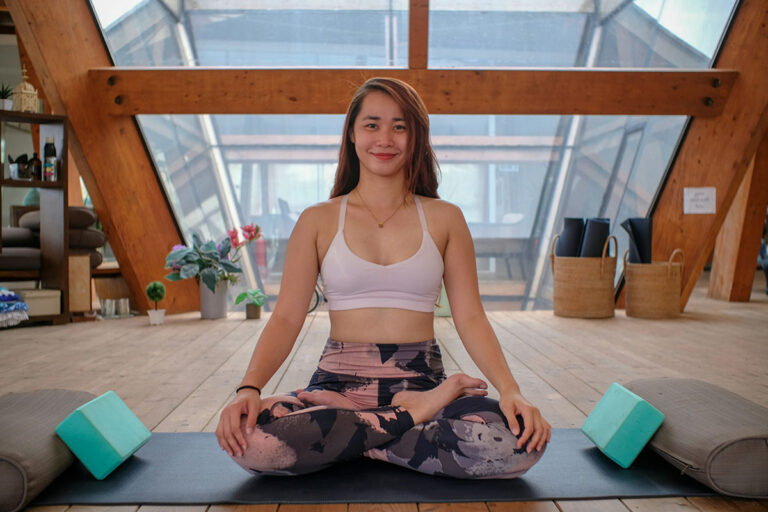Yoga is often portrayed as a pursuit for the ultra-flexible, the youthful, or the serene—but the true spirit of yoga transcends age, ability, body type, background, and belief. At its core, yoga is a path to self-awareness, healing, and inner peace, and that path should be open and welcoming to all.
Inclusive yoga is about removing barriers—physical, emotional, financial, or cultural—that prevent people from practicing. It’s a movement that challenges stereotypes and invites every body and every soul to step onto the mat and feel at home.
🧘 What Does “Inclusive Yoga” Mean?
Inclusive yoga is an approach to teaching and practicing yoga that actively embraces diversity and seeks to make the practice:
- Accessible to people of all physical abilities, shapes, sizes, and ages
- Culturally sensitive and free from appropriation or exclusion
- Financially reachable for those from underprivileged backgrounds
- Emotionally safe, trauma-informed, and judgment-free
It’s yoga that doesn’t expect you to “fit in”—it adapts itself to fit you.
💡 Why Is Inclusion in Yoga Important?
1. Yoga Is for Everyone
The ancient yogic texts make no mention of perfect bodies or gym-like environments. They speak of presence, breath, and liberation—available to anyone willing to look inward.
2. Mainstream Media Excludes Many
Pop culture often showcases yoga through a narrow lens: young, thin, white, able-bodied women. This misrepresentation discourages people from marginalized communities who don’t see themselves reflected.
3. Real Wellness Must Be Equitable
If wellness is only available to the wealthy, able-bodied, or socially privileged, then it fails to be wellness at all. True wellness includes equity—and that begins with inclusivity.
🔑 Barriers to Access—and How to Remove Them
🧍♂️ Physical Ability
Barrier: Standard poses may not be possible for people with disabilities, injuries, or limited mobility.
Solution: Use chair yoga, props, wall support, and adaptive instructions. Offer modifications without shame.
💰 Financial Constraints
Barrier: Yoga studio memberships, gear, or classes can be expensive.
Solution: Offer community classes, donation-based sessions, or free online resources.
🧠 Emotional and Psychological Safety
Barrier: People with trauma histories or mental health concerns may feel unsafe or triggered.
Solution: Train teachers in trauma-informed yoga, where consent, choice, and emotional care are central.
🎨 Body Image and Representation
Barrier: Many feel excluded due to body size, age, or appearance.
Solution: Represent diverse bodies in media, language, and leadership. Avoid “ideal” body expectations.
🌏 Cultural Sensitivity
Barrier: Yoga, as a spiritual Indian practice, is often stripped of context or commercialized.
Solution: Teach with respect for yogic roots, honor the lineage, and include authentic philosophy alongside physical poses.
🤝 What Inclusive Yoga Looks Like in Practice
- Teachers using gender-neutral language
- Mats arranged in circles rather than rows to promote equality
- Clear instructions that include visual, auditory, and tactile cues
- Students empowered to opt out of hands-on adjustments
- All-gender restrooms, wheelchair access, and quiet spaces
- Yoga cues like “listen to your body” and “your yoga is perfect as it is”
📣 Voices of Inclusive Yoga
- Jessamyn Stanley: A body-positive yoga teacher who champions yoga for all sizes and backgrounds.
- Dianne Bondy: Advocate for yoga accessibility and racial diversity in the wellness space.
- Jivana Heyman: Founder of Accessible Yoga, empowering teachers to reach underserved communities.
🧘 Styles of Yoga That Embrace Accessibility
| Style | Benefits |
| Chair Yoga | Great for seniors, injured, or limited mobility |
| Restorative Yoga | Gentle and calming, for emotional safety |
| Trauma-Informed Yoga | Sensitive to PTSD and emotional triggers |
| Yin Yoga | Slow, deep stretches for all body types |
| Community Yoga | Affordable or free sessions for local outreach |
📌 Tips for Teachers & Studios
- Use inclusive language: avoid “perfect posture” or “burn calories” talk
- Always offer props and modifications
- Create a judgment-free space where all levels feel welcome
- Display diverse images in promotional materials
- Partner with schools, senior homes, shelters, and community centers
- Include closed captions or sign language in video classes
🌱 Final Thoughts
Yoga isn’t about touching your toes—it’s about what you learn on the way down. Inclusive yoga ensures that everyone, regardless of body, background, or belief, has the chance to explore that journey.
“The true heart of yoga lies in unity, not uniformity.”Let us stretch beyond the mat—to build a world where everyone belongs, everyone breathes, and everyone is whole.



